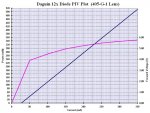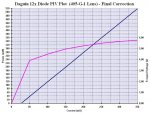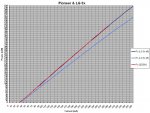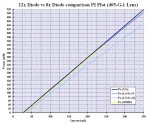IgorT
0
- Joined
- Oct 24, 2007
- Messages
- 4,177
- Points
- 0
We should donate to a 12x murder fund !!!!! lol
Seriously.
Even if each member donates a few bucks. We can easily have enough to test/kill one 12x
Umm, wasn't it you, who said it was a waste of time, at the beginning of the previous one? :crackup:
Otherwise.. I wouldn't mind... :angel:
If people buy more 12x's and plot them, and the plots keep overlapping those of 8x's, then it WILL be necessary to kill one, just to determine if there is a difference...
If on the other hand more accurate measurements show the Ith is higher, and the efficiency spread overlaps 8x's only partially, and then exceeds them, we'll know it's not the same diode.
Another interesting experiment would be to leave an 8x and a 12x in their sleds, but hook them up to a driver, and test how much of the power comes out of the objective lens... Altho they would have to be of the same efficiency, which is impossible to determine before extraction..
Hmm, i have another idea...
Dave, could you plerhaps ship the empty 12x sled to me?
I could put an 8x into an 8x sled and then into the 12x sled, and measure the efficiency of the optics... If it's done with the same diode, it would be much more accurate... If the 8x sled has better optics efficiency (since it has the beam circularizer), the 12x sled would have to contain a higher power diode....
If you have an 8x somewhere outside an AixiZ module, you might be able to try yourself...









